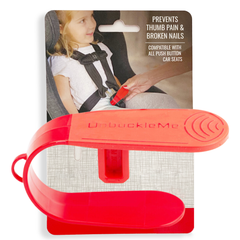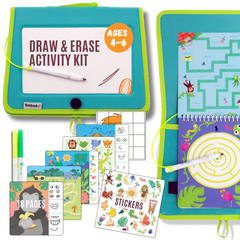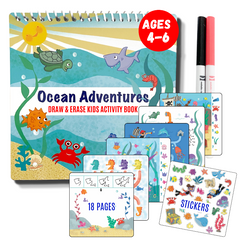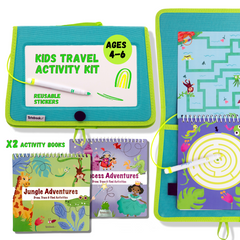When we first launched UnbuckleMe in 2016, a safety advocate from a big car seat manufacturer told me, “you should get certified as a child passenger safety technician (CPST)”. I had heard of these experts who help people (i.e., parents, teachers, hospitals, fire stations) learn how to properly install their kids’ car seats. Two years later, I followed her advice. After 40 hours of education on vehicle safety features, collision mechanics and child passenger safety systems, I am happy to pass along some important insights.
A preface: Car seats are tough. I’m a mom, and I get it. They’re heavy, and the manuals can be thick. BUT, they are also incredible life-saving devices for your most important cargo! So, take those extra moments to read the manual, learn the basics and get it right. And if you need help, you can always find a CPST like me to help you (or email me directly!) If your family is in need of a car seat but cannot afford one, visit this link for a list of helpful resources.
Tip 1: Getting a Tight Fit
I won’t bore you with the details of crash force dynamics (although in my opinion, it’s fascinating!) But the bottom line takeaway is this– it’s super important to get a tight fit, BOTH the car seat to the vehicle seat, AND your child into the car seat. When you’ve installed your child’s car seat, it should not move more than 1″ in any direction, when you push/pull it near the belt path. (It’s ok it if moves more at the top, just test it near the belt path). When your child is harnessed in the car seat, the straps should have no “pinchable” material at the shoulders. The slack should be removed so that you cannot pinch any fabric. Trust me, a tight fit makes a significant difference in the car seat’s ability to protect your child.
*Note: If Needed, Lock the Seat Belt
As explained above, when installed properly, car seats should not move more than 1″ in any direction. But I’ve heard many people say, “I just can’t get it installed that tight in my car.” I always ask them, “are you locking the seat belt”?
I’ll preface this tip by saying: read your car seat manual. Some car seats have built-in lockoffs and directly tell you not to lock the car seat (in my experience, these tend to be the more expensive car seats). But if the car seat does not have a lockoff feature, you must lock the car seat, either in the latch plate of a lap belt, or a retractor of a standard shoulder belt. In most cases, to lock a standard shoulder belt, pull the belt all the way out of the rectractor, then slowly start to feed it back in. You will hear a clicking sound and you won’t be able to pull out any more slack. You’ll want to secure the car seat first, then lock the seat belt. For more detailed info and video instruction, read here.
Tip 2: Check the Shoulder Straps
When kids are rear facing (including infant seats and rear-facing convertible seats), shoulder straps should be AT or BELOW the child’s shoulders. When kids are forward facing (including forward facing convertible seats or high back boosters with a 5 point harness), should straps should be AT or ABOVE the child’s shoulders. Check your car seat’s manual for instructions on how to adjust these straps as your child grows.
Tip 3: Use the Top Tether for Forward Facing Kids
If you have a child who is facing forward in a car seat, you must use the top tether. You’ll find the tether on the back of the car seat (yep, that long strap), and it needs to hook to your vehicle’s top tether anchor. Check your car’s user manual to help you find it. Usually it is somewhere on the back of the seat, but I’ve seen them on the trunk floor, or even the ceiling. A secure tether will prevent your child’s head from moving an additional 4-6″ in an accident. Worth checking yours.
Tip 4: Never Leave Kids Unattended in the Car
Depending on where you live, summer and even fall can be warm, hot, or sweltering. When your car is parked with the windows closed, the interior of your car can reach temps of 120-130 degrees, even if the exterior temperature is only in the 80s. This topic is exceedingly tragic to discuss, but 18 children have died in the US so far this year from heatstroke, as a result of being left in a hot car. It’s critical that we stay vigilant. Make sure that all caregivers remember to check the back seat every time they exit the car. Put your purse or shoe in your kid’s car seat, so you are forced to double check. And when your car is parked, keep it locked. The most recent case was a child who entered a vehicle without anyone knowing, and became trapped. If you see a child (or pet) in a hot car, tell someone.
5. Drive Safely
Sometimes we spend so much time focusing on our kids’ car seats– buying the nicest, most comfortable seat with the most advanced safety features– that we forget that the first line of defense for our kids is often ourselves. Drive safely. Put your phone away while you’re driving. Stop at the yellow light that’s about to turn red. When your kids are yelling that they dropped their “urgently needed” toy in the back seat, don’t take your eyes off the road to get it for them (I promise, they can wait.) Never drink and drive.
Of course, unforeseen accidents happen, so safe travel is not always in our control. But we can do OUR best to protect our kids in the car.
Safe Driving!
Becca Davison
Co-Founder, UnbuckleMe











Leave a comment